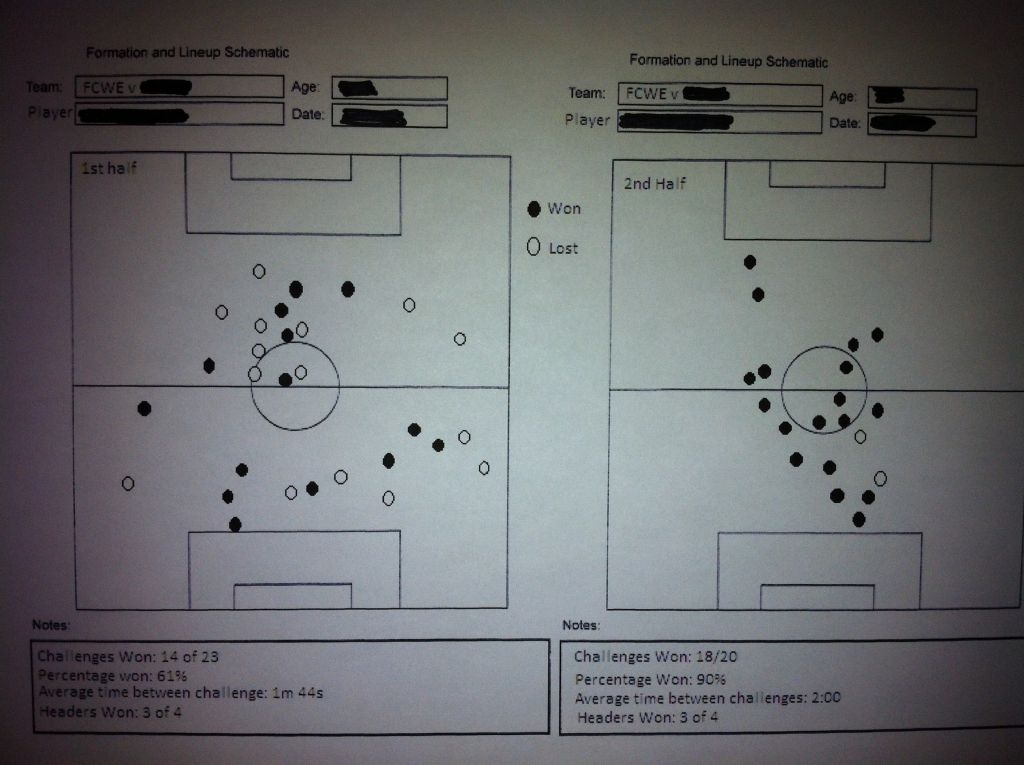Teaching and Training "Grittiness"
One of the important characteristics of elite players at every level, and a mentality that is assessed in US Soccer Girls Youth National Team programs, is “grittiness.” Generally, “grittiness” refers to the determination and fortitude to succeed in difficult situations, and it is one of the key attributes that separates players at the very top from the rest. Top players and teams display grittiness in a variety of different situations in a game, usually when physical combativeness or toughness, or tremendous determination, is required to be successful and win the moment:
- In Transition: Gritty players, after losing the ball, have an instinctive reaction to immediately fight to win it back. There is no hesitation in action, and no moment of doubt or regret – the determination to “get the ball back” is the player’s first and only thought.
- In 1 vs. 1 Attack: Gritty players use their body to “finish” attacking moves when necessary, often by “swimming” past defenders (using their upper body to get leverage and get beyond them), or simply fighting through a defender’s desperate challenge to finally get past the defender.
- In 1 vs. 1 Defense: Gritty players are combative defenders. In tackling, they use their upper body to “step into” space and initiate contact, instead of tentatively sticking a leg out. When necessary to make a play, gritty players are not reluctant to “drop down” and slide tackle.
- In Small Space Possession: Gritty players, in situations in small spaces where the opponent applies high pressure that severely limits passing options, will use their body pro-actively to shield the ball, protect space, and buy time to find an outlet.
While grit is often thought of as primarily an “intangible” quality, it can in fact be measured. To help teach and explain the impact of grit, FC Wisconsin Eclipse coaches filmed moments and charted individual performance of selected midfielders in 1 vs. 1 challenges in games a few weeks ago. The moments charted included tackles, moments where the player was in a 50/50 situation, and challenges in the air. The chart below shows performance of one of the players in these moments in each half.

From the chart, you can see several objective measurements of grit that can be used to help educate and teach both the player and team.
- In the first half, the player covered a massive amount of ground – seen by the amount of challenges scattered across the width of the field, on both sides of the field and in both halves of the field). The wide range of challenges showed the player’s tremendous work rate and determination to be involved in the game.
- In the second half, the player’s success in challenges increased from good to exceptional – increasing from 60% in the first half to 90% in the second half. This success rate in these multiple combative moments shows not only the player’s determination to be involved, but also her determination to win the challenges she was involved in.
These types of charts can be used personally and collectively to provide objective evidence of work rate and physical and mental determination. In addition, these moments can be filmed to show visually what grit “looks like.” The following videos (of different players), show more visual evidence individual moments of great grit and their impact:
In the above clip, you can see one player show multiple moments of great individual grit in the air, in defense, and in 50/50 situations in just 14 seconds. First, the player fights for space on a goal kick to prevent the opposition from cleanly winning the air ball. Immediately as the ball goes past, the player then turns and runs through a 50/50 challenge to prevent the opponent from being able to settle the ball or win it from her cleanly. When the ball is poked away, she immediately closes on two more players (without slowing or hesitating) to make a tackle and eventually force a turnover. Great fight, great work rate, and great determination!
The above clip shows the impact that grit can have in creating offense. A determined 50/50 challenge (again without hesitation) allows the team to create a turn-over and win possession in the attacking third – where they nearly get a shot on goal off great individual play and a cross from the corner
When skill is equal (or close to equal), it is often the grit displayed by individual players that decides the outcome of moments and the game:
- Grit makes up for your mistakes.
- Grit forces the opponent to make mistakes.
- Grit creates scoring chances.
- Grit is contagious.



